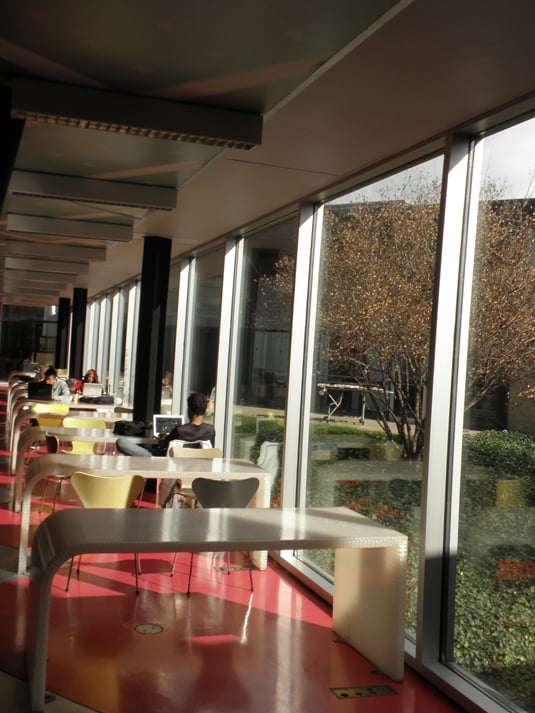
November 25, 2012
Places That Work: Provide Choices for Users
Successful spaces give users some control of their environment.
Turning ten next year, the McCormick Tribune Campus Center at the Illinois Institute of Technology, designed by OMA’s Rem Koolhaas in 2003, is a widely lauded building. Waxing poetic about the way the structure incorporates the train tracks that run above it, while protecting the building’s occupants from any noise or vibrations associated trains, is just one positive reaction to the well-known design. But for me, this campus center at IIT works because it provides students and faculty with choices of where to work and hang out. Their options range from sundrenched tables to underground computer stations. Like any student center, this too contains spaces where the kids can eat, drink coffee, meet with others, and shop during their breaks. But it’s the sense of control they get that I find rewarding.

We humans are comfortable when we can control our physical environments. This sense of control can from adjustable lights, fans, heaters, and other appliances. In fact, even if we never adjust any of the settings, we feel better, just knowing that we can. In addition, we can experience comforting control when we’re given the option to choose from a number of places to work or daydream. Different environments support many different activities, personalities, and cultures – something all of us understand, inherently. The IIT McCormick Tribune Campus Center is a place that works because it supports an assortment of user profiles, gracefully.
Sally Augustin, PhD, is a principal at Design with Science . She is also the editor of Research Design Connections and the author of Place Advantage: Applied Psychology for Interior Architecture (Wiley, 2009). She can be reached at [email protected] This post is part of a series of Places that Work.





